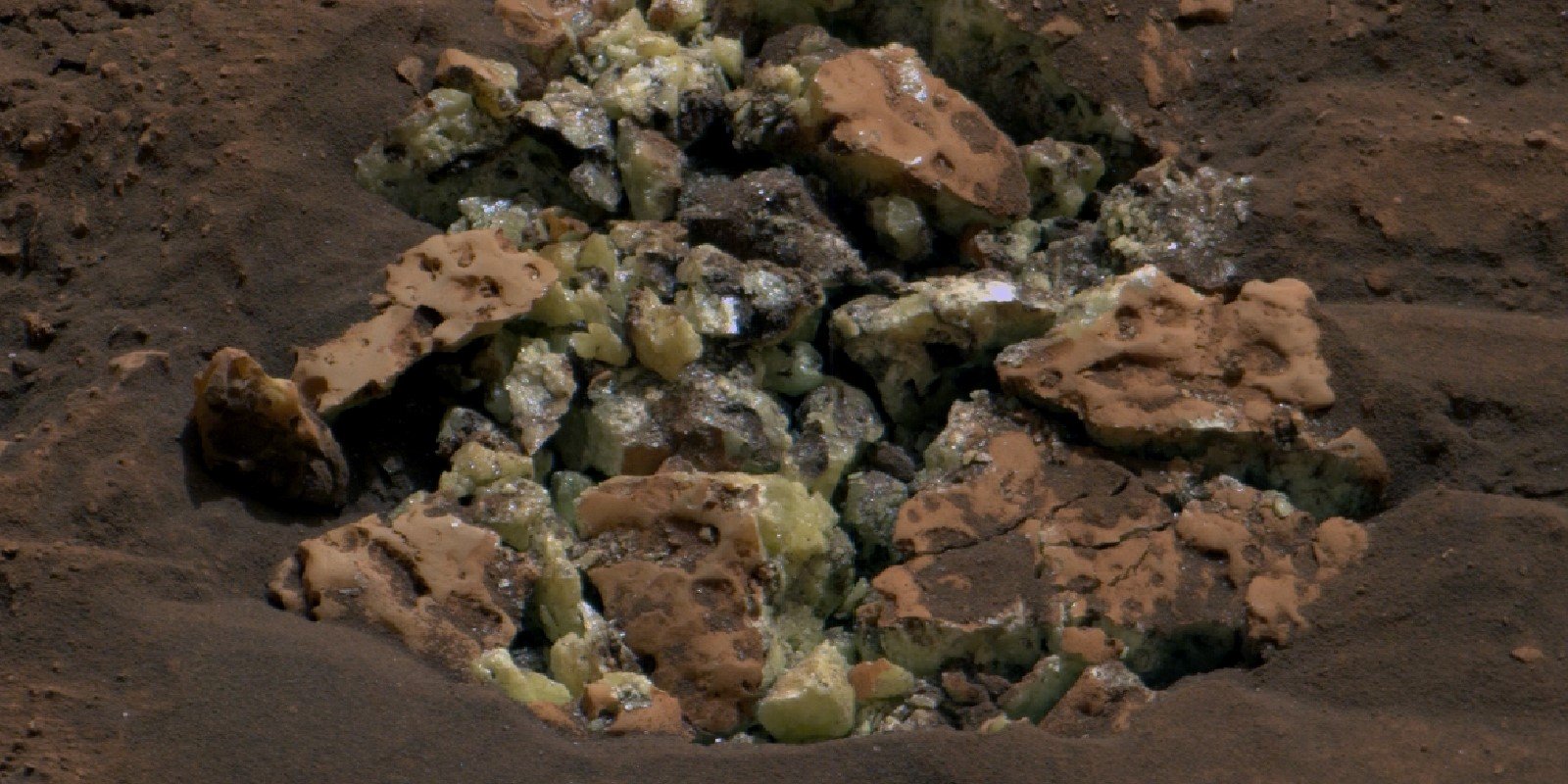The Curiosity rover has found something surprising: rocks made of pure sulfur.
NASA revealed the find in a post last week, recounting how the rover was trundling up the Gediz Vallis channel – a formation it’s thought was carved by a river around three billion years ago. The channel is of interest as the ridges offer a good look at plenty of layers of Martian rock.
The channel is a known source of sulfates: salty stuff that forms when water evaporates. The presence of sulfates is another reason we’re visiting Gediz Vallis channel.
As Curiosity went about its business, the rolling lab crushed a rock that, upon further inspection, was found to be composed entirely of pure sulfur.
Yellow sulfur crystals revealed after NASA’s Curiosity drove over a rock and crack it open on May 30. Credit: NASA/JPL-Caltech/MSSS – Click to enlarge
Curiosity also spotted many more rocks that, on the outside, look like the piece of pure sulfur it crushed.
Sulfur only forms under specific conditions, so finding plenty of it in one spot is tantalizing and unexpected.
“Finding a field of stones made of pure sulfur is like finding an oasis in the desert,” gushed Curiosity’s project scientist, Ashwin Vasavada of NASA’s Jet Propulsion Laboratory in Southern California. “It shouldn’t be there, so now we have to explain it. Discovering strange and unexpected things is what makes planetary exploration so exciting.”
NASA’s post advances no theory for the presence of the sulfur.
But it does offer some analysis of what Curiosity has seen in the Gediz Vallis channel: evidence of a few different processes at work on the landscape.
“Since Curiosity’s arrival at the channel earlier this year, scientists have studied whether ancient floodwaters or landslides built up the large mounds of debris that rise up from the channel’s floor here,” the post states, before offering the analysis that both probably played a role. “Some piles were likely left by violent flows of water and debris, while others appear to be the result of more local landslides.”
The state of debris spotted by Curiosity supports that hypothesis – some of the stuff seen in mounds near the channel are “rounded like river rocks” while other sections are “riddled with more angular rocks that may have been deposited by dry avalanches.”
To help ponder that matter, and the sulfurous situation, Curiosity unpacked its drill and made a new hole in the red planet. The target for this – the 41st such assault on Mars by the rover – was a rock named “Mammoth Lakes” that was chosen for being near the sulfur rocks, but larger and less brittle. The sample recovered by the drill is now stored within Curiosity for consideration by the rover’s Sample Analysis at Mars (SAM) Instrument Suite. ®
#ran #rock #pure #sulfur #Register,
#ran #rock #pure #sulfur #Register
